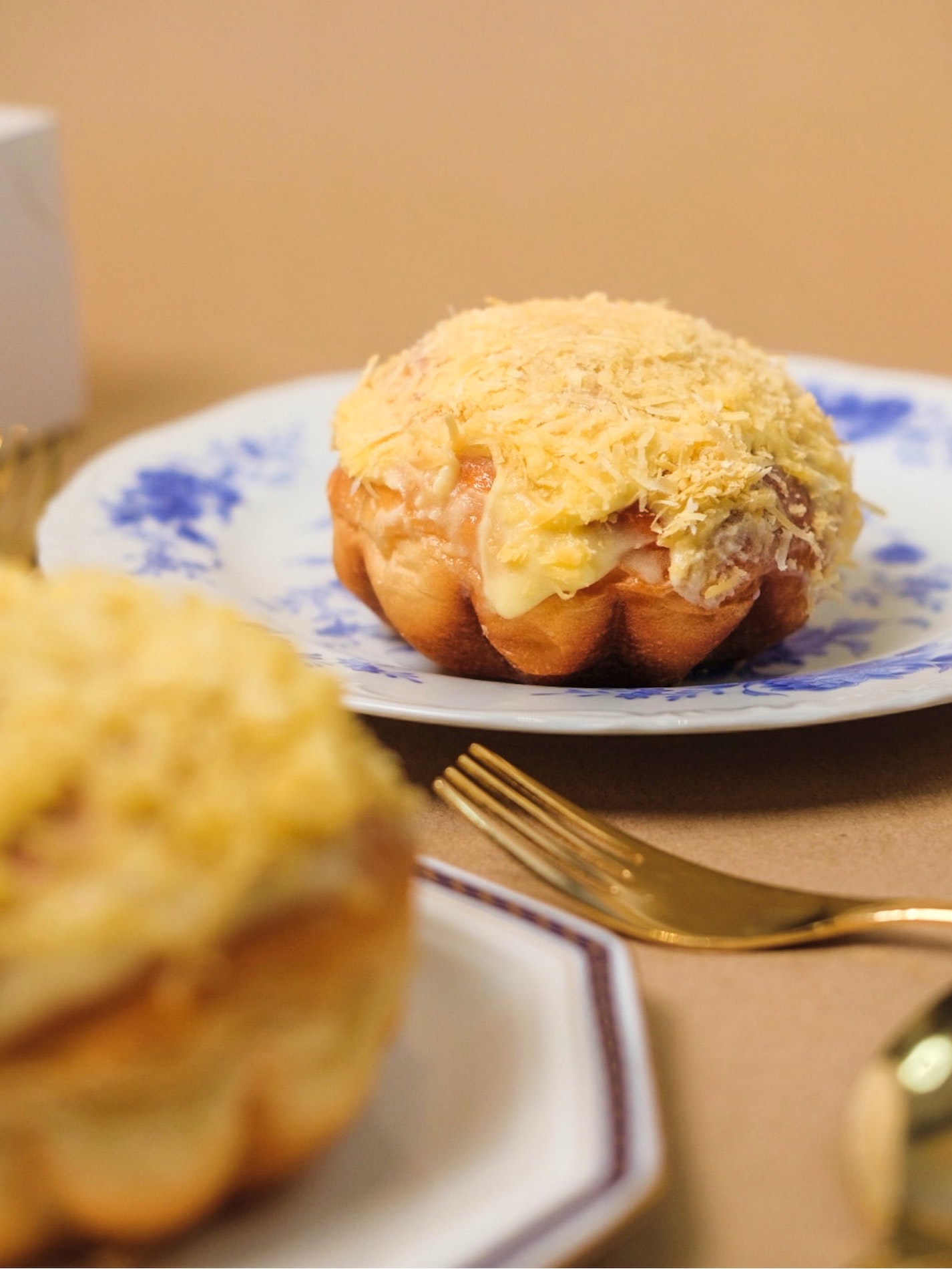The ensaymada was my first big baking failure.
Five trials, 60 hours, 40 egg yolks, and almost one kilo of butter later, I wasn’t even close to getting ensaymada antigua (old-fashioned Pampagueño ensaymada) right. The dough was too slack and the end product was too dense. I was disappointed in myself, in my inability to make this recipe work. But then again, as I would later learn in the course of my research, it is notoriously difficult to make ensaymada antigua.
This is because good ensaymada is a paradox: It must have structure and it must be rich, flavorful and buttery, yet it should also be light and flaky with visible and distinct layers inside. The dough is problematic in that it has a higher ratio of fat and liquids (egg yolks, milk, and butter) to flour, making it almost impossible to knead and shape.
It’s why many Pampagueño families are secretive about their ensaymada recipes in the same way that the Negrenses are with their chicken inasal. Why give away the secret of something that took so much time and effort to figure out? It took professional baker Chona Ayson of Homemade Treasures Cakes and Pastries in Porac, Pampanga two years to perfect her grandmother’s recipe from the 1930s. Little wonder then that some Pampagueño bakers like Meliza Henares of Imang Salud refuse to grant interviews about their beloved ensaymada recipes.
Ensaymada comes in many kinds, but all of them are basically enriched breads, akin to brioche. They are also typically shaped into coiled rolls. The original ensaymada in Mallorca is not nearly as rich as our versions here. It’s more ‘bready’ and is only topped with powdered sugar.
Although ensaymada antigua became popular in Pampanga in the 1920s, it traces its origins to Mallorca in the Balearic Islands of Spain. Alan Davidson, in his book “Oxford Companion to Food,” writes that ensaymada came from the Mallorquinese word saim, which means pork lard.
Today, pork lard is no longer considered an essential component of ensaymada antigua; instead, it has been replaced with copious (even criminal) amounts of butter. Egg yolks also figured prominently in Pampangueño ensaymada recipes from the 1920s and ’30s. Historians believe that there was an overrun of yolks then because egg whites functioned as the ‘cement’ in the building of churches and people had to find a way to use up all the leftover yolks. Hence, many yolk-based confections were born—from tocino del cielo to yema cakes to ensaymada.


Ensaymada comes in many kinds, but all of them are basically enriched breads, akin to brioche. They are also typically shaped into coiled rolls. The original ensaymada in Mallorca is not nearly as rich as our versions here. It’s more ‘bready’ and is only topped with powdered sugar.
Pampagueño ensaymada, on the other hand, is more like laminated dough, in that it has layers, or hojas, which means ‘leaves, blades, or sheets of paper’ in Spanish. This is a result of the repeated rolling of soft butter and grated cheese into the dough before forming it into snail-like coils.
The ensaymada in Bulacan is topped with slices of salted egg, while the Pampagueño version is richer and more yellow because of the increased number of egg yolks. Both local variants contain lots of grated quezo de bola as well.
These days, many more flavors can be had apart from the traditional quezo de bola. Ayson fills her ensaymadas with ube, pistachio, Greek flavors (epirus butter and kefalotyri cheese), ham, and chili pimiento. Baby Pat ensaymadas come in Nutella, Speculoos, tablea chocolate, salted caramel, and premium latik.
Will I ever be able to solve the paradox? I’ll keep trying, sanity and eggshells be damned. After all, there are a few things in the world that are as comforting and rewarding as warm ensaymada.
Originally published in F&B Report March-April 2015

